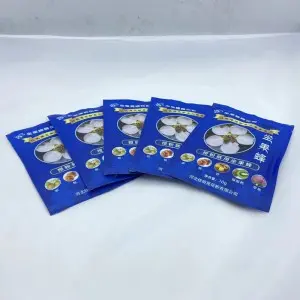Aug . 09, 2024 00:45 Back to list
Innovative Use of Paper Bags for Enhanced Fruit Shading in Agricultural Production Facilities
The Use of Paper Bags for Shading Fruits in Agriculture
In the realm of agriculture, particularly in fruit cultivation, effective management of environmental factors is critical for enhancing yield and quality. One innovative solution that has gained traction is the use of paper bags for shading fruit. This environmentally friendly method not only protects the fruits from adverse weather conditions but also helps to improve their overall quality.
The Necessity of Shading in Fruit Cultivation
Fruits like apples, pears, grapes, and other delicate varieties are susceptible to various environmental stresses, including sunburn, excessive moisture, and pest infestations. These stresses can adversely affect fruit development, leading to reduced quality and economic losses. For instance, high temperatures and direct sunlight can cause fruit skins to scorch, resulting in unattractive blemishes and reduced market value. Therefore, implementing shading techniques is essential to mitigate these risks.
Advantages of Using Paper Bags
The use of paper bags as shading implements presents multiple advantages. Firstly, they provide a barrier against direct sunlight while still allowing for the passage of air. This helps to regulate temperature and humidity around the fruit, creating a more favorable microclimate. The porous nature of paper bags ensures that moisture does not accumulate, thus reducing the risk of diseases caused by decaying fruits.
Moreover, paper bags are biodegradable and environmentally friendly, making them a sustainable choice for farmers. Unlike plastic coverings which can contribute to pollution and harm wildlife, paper bags decompose naturally, returning nutrients back to the soil. This aligns with the growing demand for sustainable agricultural practices and can enhance a farm’s marketability by appealing to eco-conscious consumers.
paper bag for shading fruit factory

Implementation and Best Practices
To effectively implement the use of paper bags in fruit cultivation, proper techniques must be followed. The timing of the bagging process is crucial; it is typically recommended to bag the fruits shortly after flowering. This ensures that the fruit is protected from the onset of harmful factors that could hinder its development. Farmers should also consider the bag size, ensuring it is suitable for the specific fruit type to provide optimal shading and protection.
Moreover, monitoring the microenvironment around the fruit is essential. Farmers should periodically check for any signs of over-moisture or fungal growth within the bags and adjust their practices accordingly. For instance, they may need to loosen the bags or create small ventilation holes to allow excess moisture to escape.
Potential Challenges
While the use of paper bags for shading fruits presents numerous benefits, there are challenges that farmers may encounter. For example, depending on local weather conditions, paper bags may be more susceptible to tearing or degrading quickly in heavy rain or humidity. Farmers should select high-quality, durable paper bags designed for agricultural use to mitigate this risk.
Conclusion
The adoption of paper bags for shading fruits represents a significant step towards sustainable agricultural practices. By providing effective protection against the elements while remaining environmentally friendly, paper bags can help farmers enhance the quality and marketability of their fruits. As the agricultural sector continues to evolve, innovative solutions like this highlight the importance of marrying agricultural efficiency with ecological responsibility. Embracing such practices not only benefits farmers but also promotes a healthier planet.
-
Eco Fruit Paper Bags for Peak Freshness | Durability Focused
NewsJul.31,2025
-
Pollen Peach Tree for Pure Pollination and High-Quality Peach Pollen
NewsJul.30,2025
-
Premium Cherry Pollen for Pure Pollination & Different Types
NewsJul.30,2025
-
Artificial Pollination Solutions for Various Plant Pollen Types
NewsJul.29,2025
-
Artificial Pollination Solutions for All Plant Pollen Types
NewsJul.29,2025
-
Premium Plant Pollen for Pure Pollination & Pollen Block Solutions
NewsJul.29,2025